More deals, less work: How to unlock new efficiencies with sales automation
Operating a sales organization at any scale involves a lot of tedious, repetitive work. Without sales automation, this work can become a black hole for your sales reps’ time.
In their “State of Sales” report, Salesforce found that in an average week, sales reps spend 64% of their time on “non-selling” tasks – everything from entering lead data to manually prioritizing opportunities. It goes without saying that while these tasks are necessary to run your sales organization, they’re not the best way for reps to be spending their time.
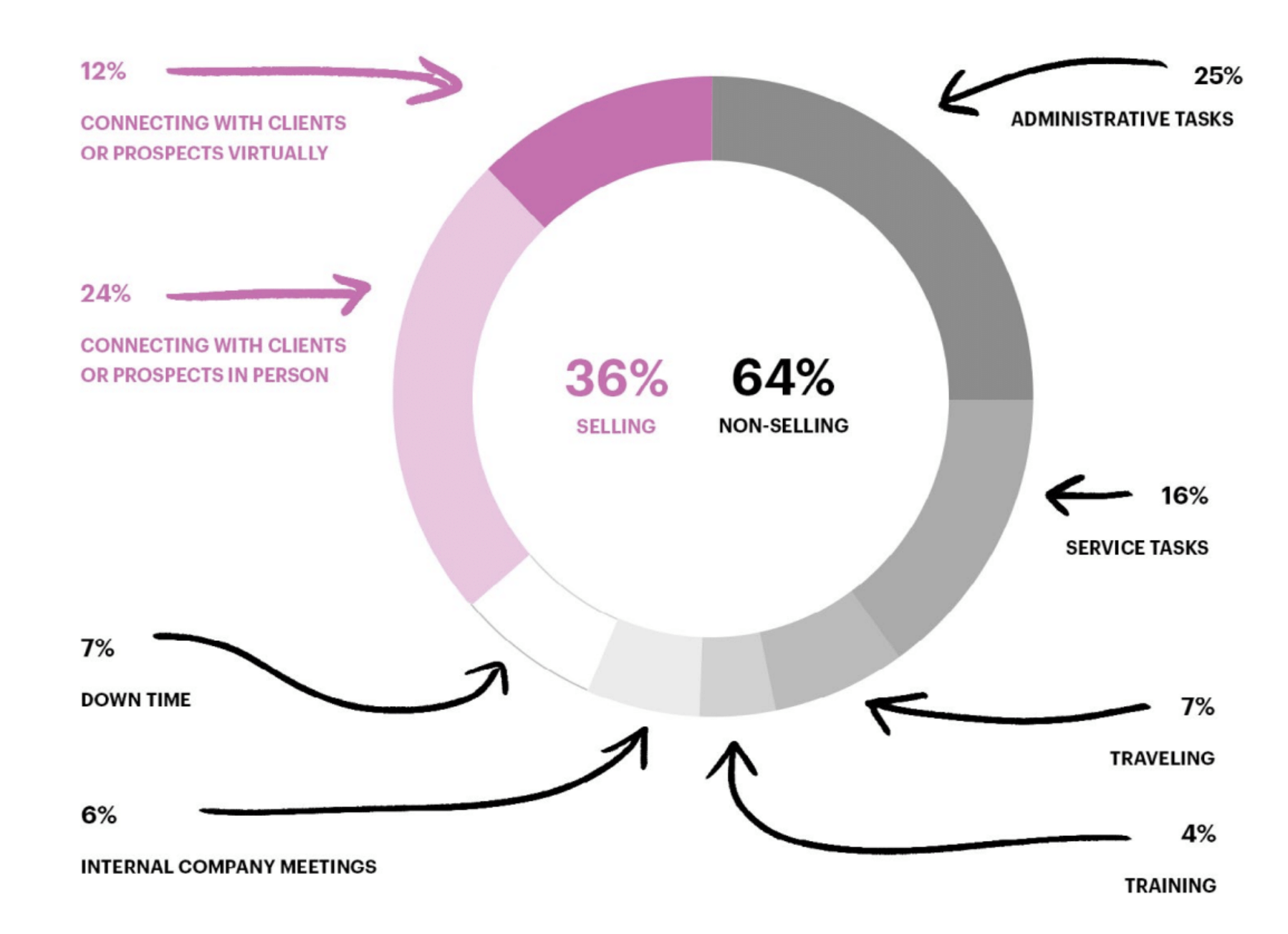
The idea of automating these “non-selling” tasks isn’t new – long before the explosion in sales tools, SAP, IBM and Oracle were already helping companies streamline their sales process. What is new are the types of tasks we’re now able to automate, from qualifying and routing leads to creating deep integrations between our sales stack and martech stack.
These advances in sales automation have enabled our reps to spend their time on the activities that matter most (hint: the revenue-generating ones) and deliver a better, more personalized buying experience. Here are our top tips, workflows and tools for automating the sales process.
What is sales automation?
The sales automation process takes manual, time-consuming tasks that sales reps have to do on a daily or weekly basis and handles them automatically – in most cases, through customizable workflows. Scheduling follow-up meetings? Updating account information in your CRM? These are all tasks that are prime candidates for automation.
“With less time spent on manual tasks, sales reps can focus on more impactful work: personalized outreach, demos, negotiations”
Here’s a familiar example: routing leads to sales reps. It’s a process that’s crucial to nail if you want to maintain your sales velocity, but having people do it adds no value and only invites human error. For leads that contact us through live chat, we use a chatbot to automatically route conversations to our SDRs based on short list of qualification and lead scoring questions.
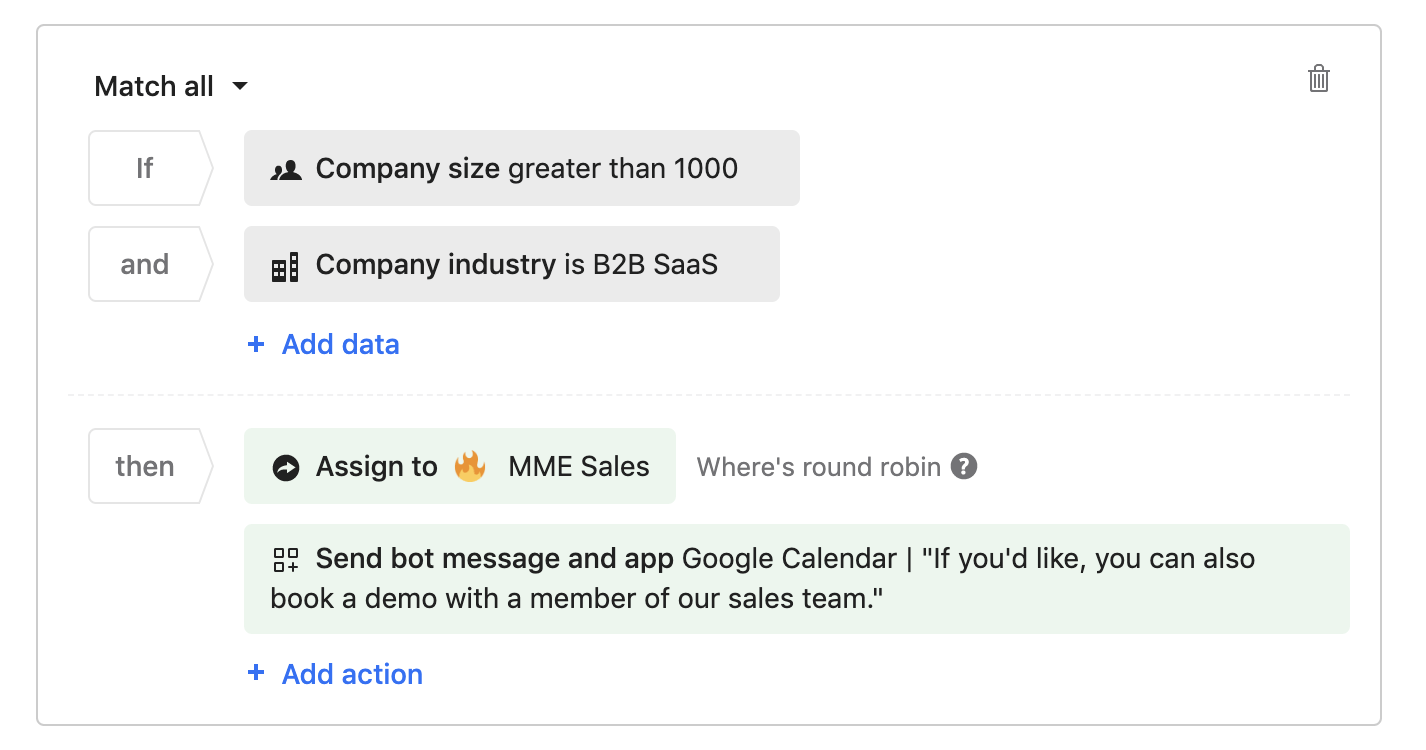
Automated workflows like this one save sales teams so much time and improve the team’s overall productivity. With less time spent doing manual tasks, sales reps can focus on more impactful work: personalized outreach, demos, negotiations and so on. Prospects are happier too – faster sales cycles benefit everyone – and more likely to convert to customers.
Identifying opportunities for automation
While sales automation is a powerful tool, it isn’t meant to eliminate all the work that sales reps do. We aim to automate the parts of our sales process that are high touch but low value – that is, the activities that take up a lot of time but don’t actually require human decision making or oversight to do well.
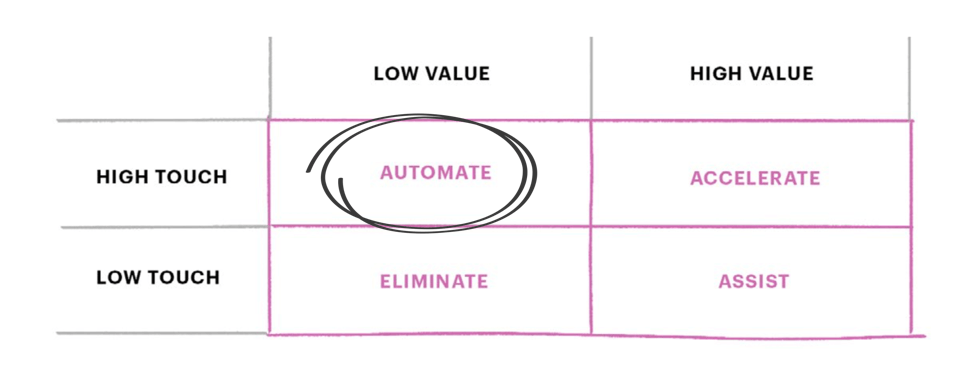
Using a time and motion study
A helpful way to identify all the tasks that your sales team can automate is with a time and motion study. You can also start with a list of common time-consuming sales tasks, if there are particular parts of the sales process you want to make more efficient.
For the time and motion study, your sales reps time their tasks for an entire day. They measure:
- What task they’re doing.
- How much time each task takes.
- How many times per day they do it.
The end goal is to identify repetitive tasks that take up a lot of time. For example, if a sales rep needs to add lead information to your CRM, this may take them five minutes each time and be done 15 times each day. That’s over an hour of every sales rep’s day spent copy-pasting data – far too much time on a task that doesn’t actually drive revenue.
“The end goal is to identify repetitive tasks that take up a lot of time”
If you’re looking to implement new automated workflows for your sales team, do your homework first to identify the inefficiencies you’re currently facing. It’s best to have hard data on your current situation before jumping in to make changes. Otherwise, you may end up adding sales tools to your team’s tech stack that don’t really solve the issue at hand, or you’ll have a hard time proving a positive ROI on the changes you’ve made.
Using sales automation to reduce inefficiencies
We use our own customer messaging platform, Intercom, to eliminate a number of inefficiencies for our sales reps. Here are three examples that sales managers can easily replicate for their sales team:
1. Keep your prospect and customer data in sync
Our integration with Salesforce allows us to automatically sync prospect data between our two tools. If we’re speaking to a new lead over live chat, for example, we can create a profile for them in Salesforce with a single click – without having to leave the conversation. Once the lead’s profile has been linked, all of their demographic information like their first and last name, company and email address will be kept up-to-date in both places.
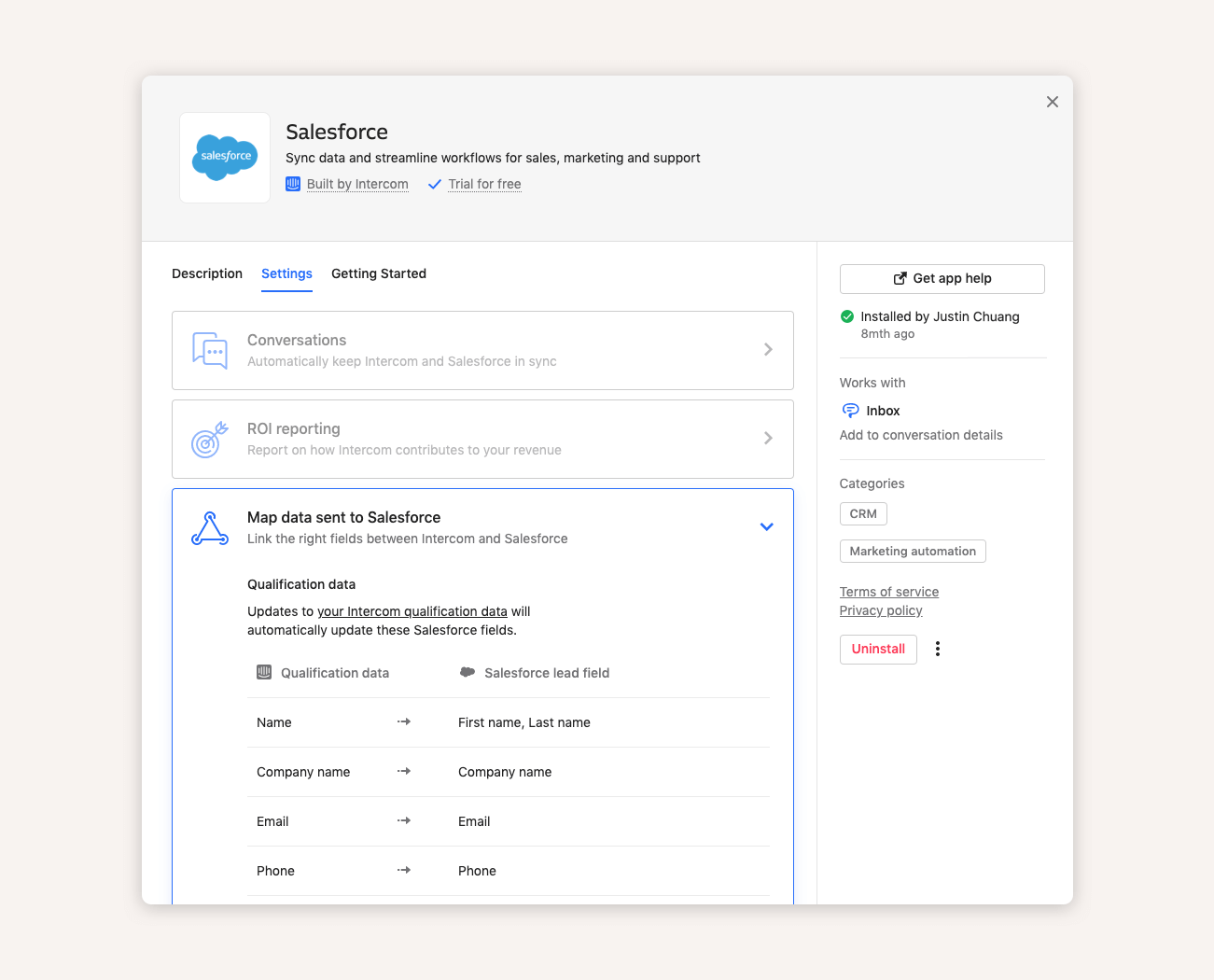
This automated workflow keeps our reps from needing to copy-paste information between Intercom and Salesforce every time they talk to a new lead or need to update the information for an existing opportunity. With the click of a button, a two-way sync is set up between Intercom and Salesforce, allowing our reps to focus on the conversation at hand instead of data entry.
2. Automatically connect with leads from target accounts
Previously, we had no easy way to alert our sales team if prospects from our target accounts – high-value accounts with dedicated sales owners – were active on our website. If a prospect started a conversation, they’d be randomly assigned to a sales rep who, in most cases, didn’t have the necessary context. This created an inconsistent experience for prospects and led to missed opportunities for our reps to move key deals forward.
Intercom’s account-based marketing (ABM) features have made it easy for us to connect sales reps with their target accounts in real time. Now we can automatically alert reps when prospects from their accounts are online, and all live chat messages are instantly routed to the right person, so they can pick up the conversation exactly where they left off.
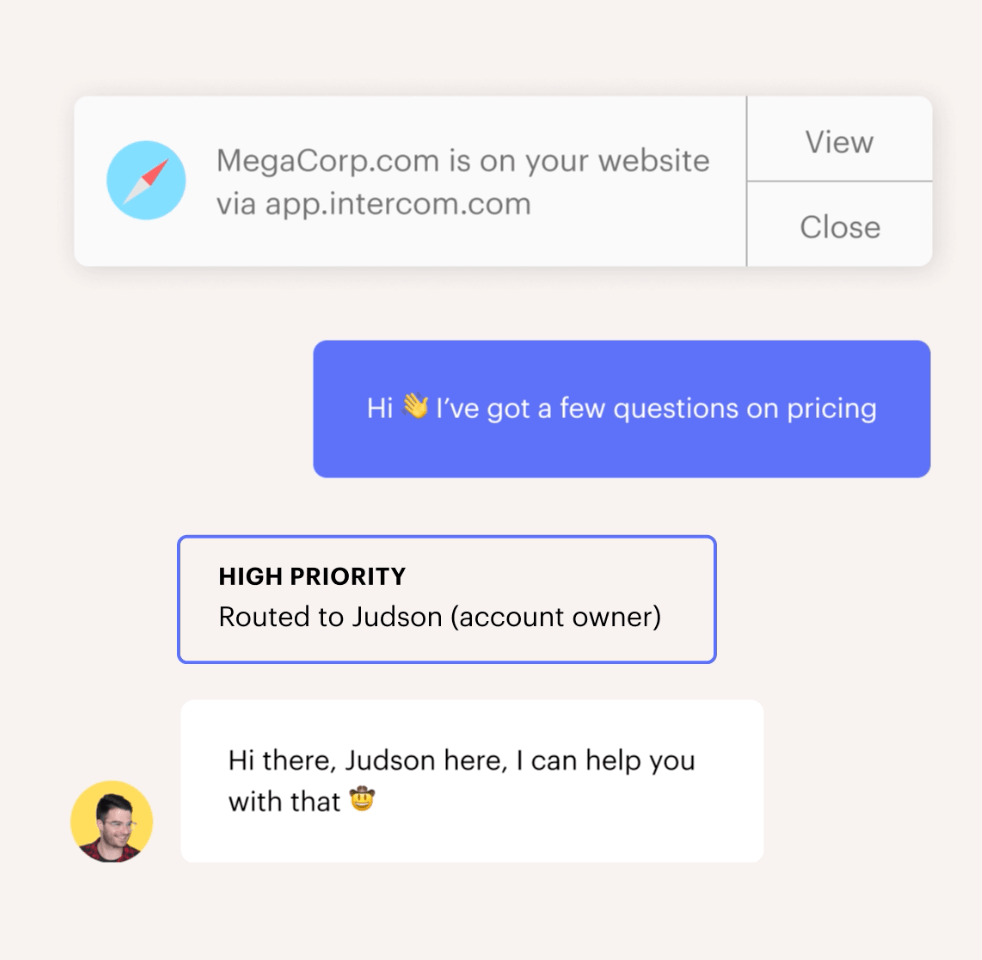
3. Integrate sales reps’ workflows into their inbox
Sales reps spend a lot of time switching between tabs – their email, CRM, lead generation and enrichment tools and messaging apps. That’s exactly what we noticed on our own sales team. Whenever a lead’s status changed, new information came in or existing information needed to be updated, our reps would have to hunt it down in one of their tools or even copy-paste data between tools.
By bringing apps into the Intercom Inbox, we’ve eliminated the frustrating back-and-forth of disconnected tools. Our sales reps’ Inbox is now customized to work the way they do, with easy access to lead qualification and prospecting data, and the ability to quickly navigate to a prospect’s Salesforce profile.
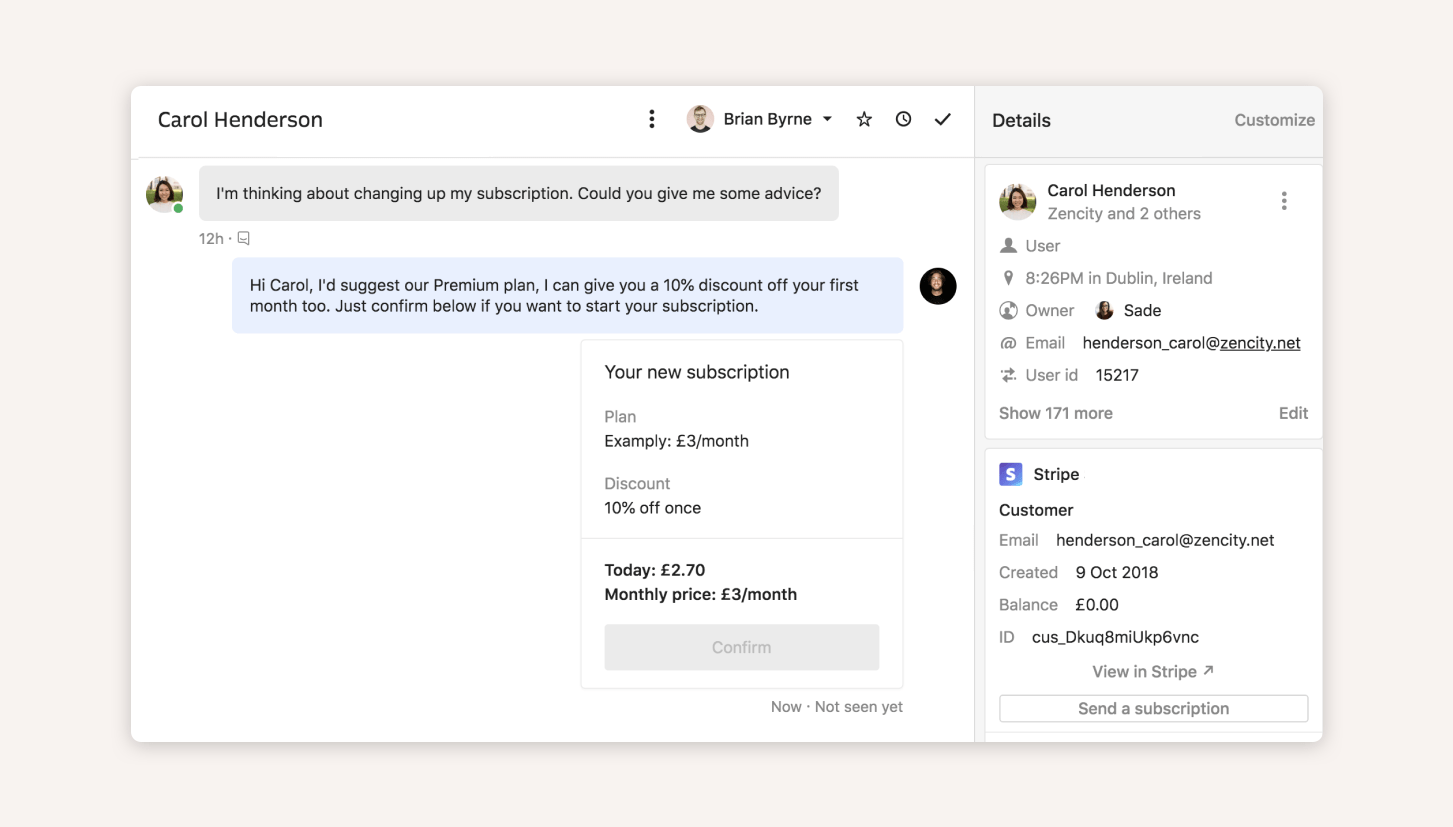
One of my favorite apps for the Intercom Inbox is the Stripe app. You can create new subscriptions, upgrade existing ones or just review billing details, all while you’re chatting. If you need to make any changes, you can easily send prospects or customers a subscription confirmation, and their plan will automatically update in your inbox and in your Stripe account.
6 tools we use to automate the sales process
We have a carefully chosen lineup of sales tools, a number of which we picked specifically to automate time-consuming, low-value activities. Here are six sales automation tools that our sales reps use regularly and I highly recommend to other teams looking to scale their sales automation efforts.
1. Intercom’s Custom Bots
Custom Bots supercharge our sales pipeline by taking care of repetitive, administrative tasks that our SDRs used to be tasked with – from qualifying website visitors to scheduling demos and creating new leads in Salesforce. We’ve tailored our Custom Bots to send different leads down different paths, depending on where they are in the buying journey.
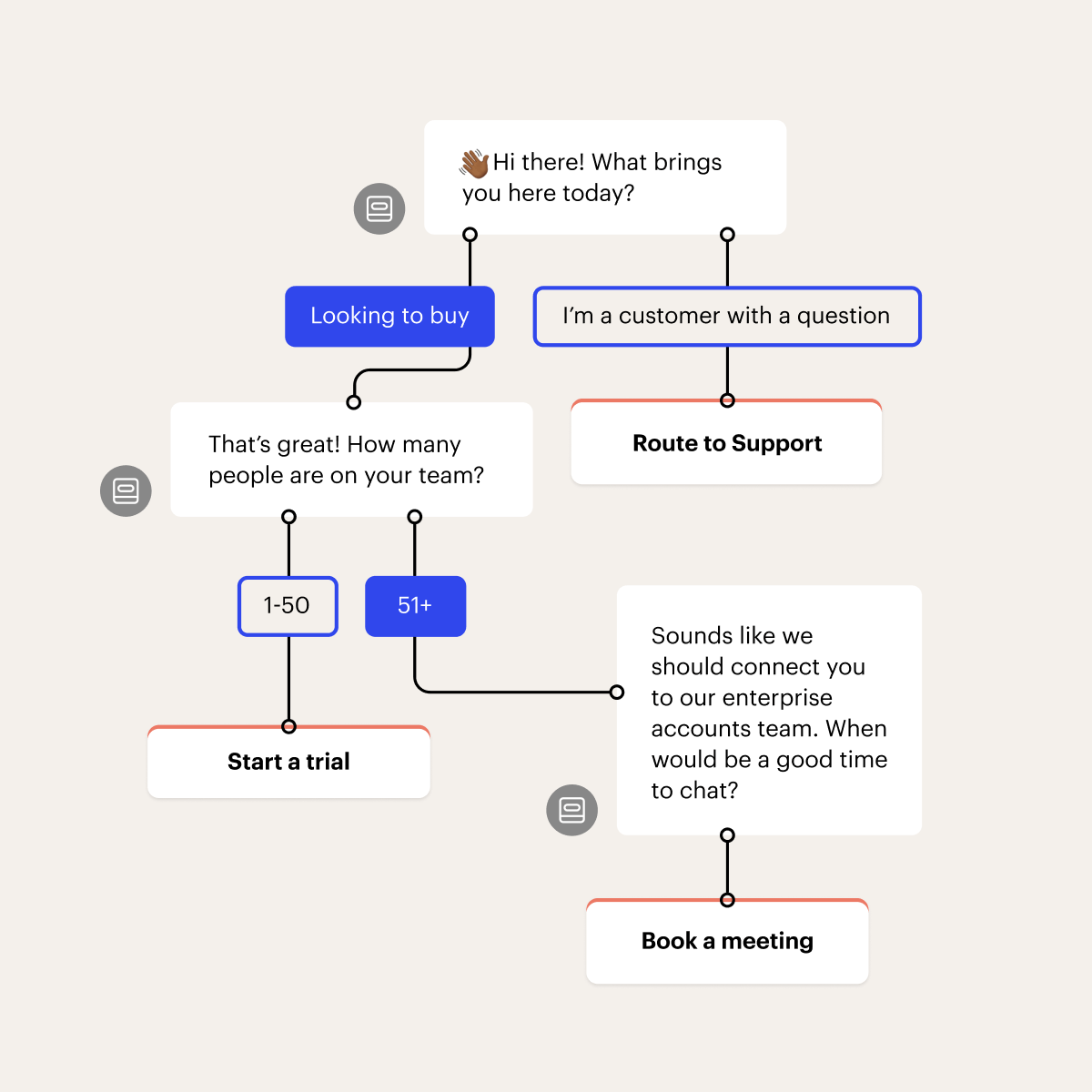
Using chatbots as part of our automation lineup enables prospects to get what they need faster. In less than a minute, prospects can register for a webinar, book a meeting or even start a trial. That way, when they do connect with our sales team, our reps are able to focus on what only humans can do: building the kind of meaningful relationships that actually closes deals.
2. Salesforce
Salesforce is our CRM of choice. Our Sales Operations team loves how they can customize it, do robust reporting and integrate it with the other tools in our tech stack, including all the ones listed here. Its extensive platform allows us to sync lead and customer data between all our tools, even the ones that don’t talk directly to one another.
As I mentioned earlier, the Salesforce app for Intercom is crucial to ensuring our sales reps have complete, up-to-date context on their leads. When new website visitors chat in, our two-way integration enables us to instantly send qualified leads to Salesforce, either with a chatbot or in one click by a sales rep. Our sales reps can also see information from Salesforce right in their inbox – the account’s status, owner, opportunity stage and value, and more.
3. Clearbit
Clearbit is another sales tool we’ve found invaluable. The Clearbit Reveal app for Intercom automatically fills in missing information from websites and social media about new leads like their company name, location and industry. With this information, conversations can be routed to the right inbox, whether that’s to our SDRs or, for current customers, to our support and relationship management teams.

With the Clearbit app, we are also able to proactively target our most valuable website visitors by using attributes like Alexa Rank or company size to customize who is able to see our Messenger. We can even dynamically insert Clearbit attributes into our messages to personally welcome visitors and convert more of them into sales opportunities.
4. LeanData
We use LeanData to automatically route our sales leads. Once we’ve set our assignment rules, LeanData takes care of ensuring the right prospects are assigned to the right reps. For instance, if a qualified lead belongs to a company with more than 1,000 employees, they should be assigned to one of our mid-market account executives who has experience handling complex sales. In this case, LeanData will use our routing logic to round robin this lead to whomever’s up next on our sub-team of mid-market AEs.
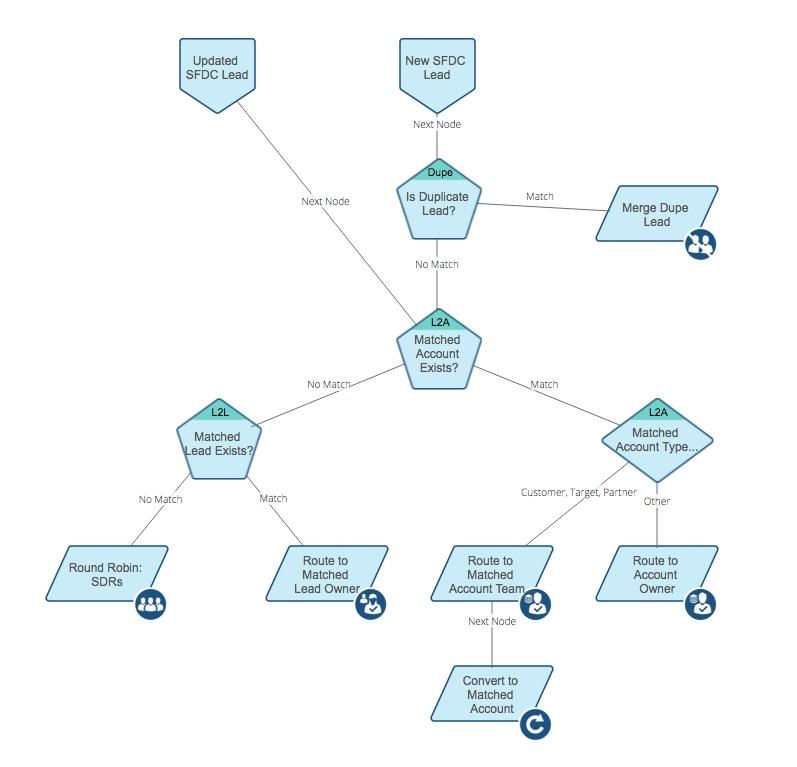
An example of lead routing that can be done in LeanData, including notification and trigger rules.
5. SalesLoft
Not all of our leads come in through live chat, although many do. Some sign up for webinars, download one of our books or meet us at industry events. SalesLoft enables our sales reps to streamline and automate our email outreach to these prospects so we can grow our relationship with them and their interest in Intercom.
We’ve set up email cadences in SalesLoft that allow our sales reps to proactively follow up with qualified leads. Instead of having to send one-off emails, we can use existing templates with custom attributes to personally engage with prospects at scale. This saves our sales reps time, ensures our messaging is consistent and helps increase the velocity at which we’re able to move deals forward.
6. Tray.io
Here’s one final piece of automation software we love: Tray. We use the Tray Platform to build automated workflows across multiple tools. Tray makes it easy to surface notable customer events – such as changes in product usage or spend – that our sales reps should be aware of. We can push the data bi-directionally to Salesforce and even send real-time notifications on Slack.
For example, if a customer purchases a new add-on like Product Tours, we consider that an important change. Tray will surface this event and notify the rep assigned to the customer’s account. Then the sales rep can decide what action is most appropriate: reaching out personally to say thanks, sending over resources on using new features, scheduling a time to discuss their objectives and so on.
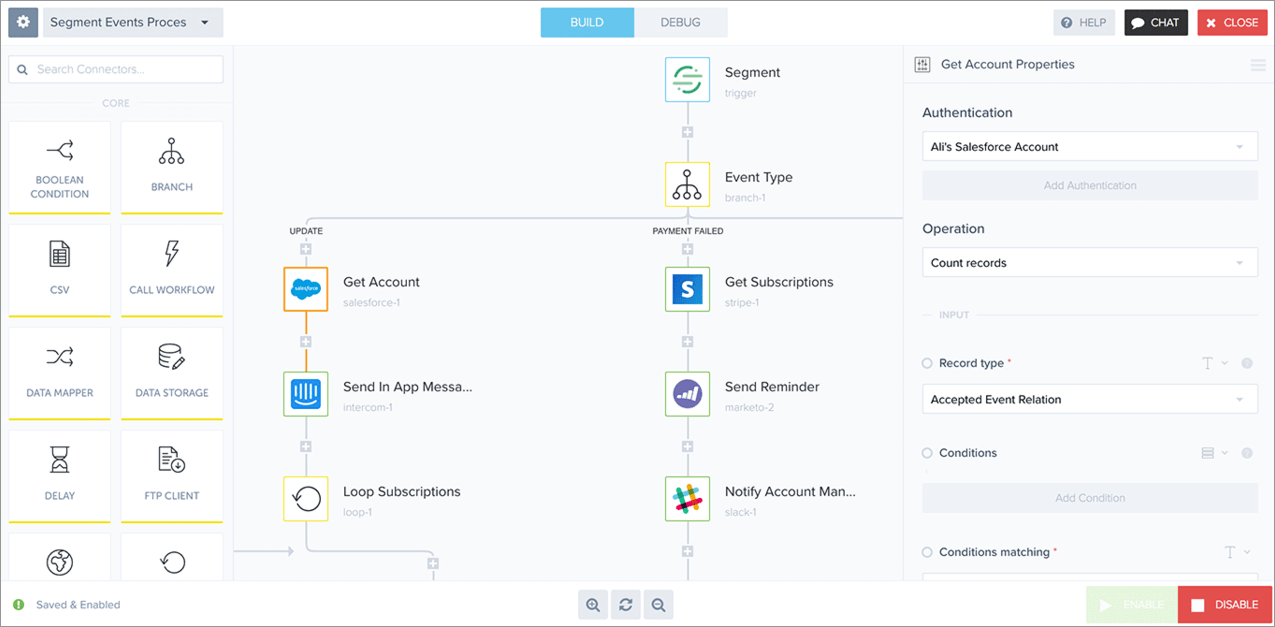
Make your team more efficient with sales automation
Not everything your sales team does can or should be automated – after all, robots still can’t close deals. But by identifying low-value, high-touch tasks your team does regularly, you can start to look for tools that save time, allow you to spend more time on revenue-generating tasks and ultimately give your sales reps what they need to close deals faster.






